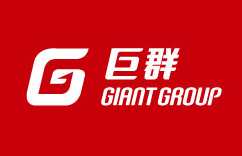【Trademarks】Trademarks containing numbers: Taking the trademarks “ONE GYM and device”, “gym4u” and “STRONG ZERO” as examples
2020-07-24 Natsuko Chao
I. A trademark which is a combination of description of goods/services and numbers
We have been entrusted with an application, in which our client wished to file the Arabic numeral “1” or the word “ONE” as their trademark, and would designate it on rental services of sports equipment. In this case, would the proposed trademark meet the standards of distinctiveness in the examination practices?
According to the Examination Guidelines on Distinctiveness for Trademarks (“the Guidelines”) issued by Taiwan Intellectual Property Office (“TIPO”), although simple numbers are not directly excluded from trademark registration, based on the usual business practices, if the numbers might be deemed as dates, sizes, quantities, etc., the general consumers usually will not deem them as an indication of sources of goods or services, hence simple numbers are deemed not distinctive in principal. Hence, the Arabic numeral “1” obviously cannot pass the distinctiveness requirements. But if the number is written as a Chinese character, the guidelines stated that instead the examination rules for words shall apply.
However, if numbers are expressed in foreign languages, the Guidelines did not expressively indicate whether rules for words shall apply. If based on past examination practices, for example the registered trademarks containing “ZERO” which will be discussed in Section II below, we could tell that TIPO in general views them as words. Nevertheless, considering it is also possible that non-stylized word “ONE” will be deemed non-distinctive, we suggested our client to apply design elements to the word “ONE”, in order to enhance its distinctiveness, as below:
Furthermore, according to the publication “Examples of Words Need Not to Be Disclaimed” announced by TIPO, the word “GYM” usually is deemed as “a word representing the goods or service provider, a shop, or a name of place”, which is clearly non-distinctive and hence no need to be further disclaimed. Therefore, in the above indicated trademark, only the word “ONE” with design would be deemed the main distinctive portion. With the design, this trademark has a higher distinctiveness and generates stronger impression to consumers, as well as luckily there were no prior similar marks at the time of filing, hence it was allowed to be registered.
Besides, the same client has filed another trademark “gym4u” which also combines “gym” and numbers. This trademark was filed in non-stylized standard characters and on the same goods and services. This mark contains the service description “gym” combined with “4” and “u”, which stand for “for” and “you” by sound, thus the whole mark may be interpreted as “gym for you”.
If we just file a “gym for you” mark on the services “rental of sports equipment, except vehicles”, it is very likely that it will be deemed as a description of the use or characteristics of the designated services, which is not distinctive; but the actual mark “gym4u” is written in a combination of words and numbers, and the consumers will need to apply their imagination, thoughts, feeling or inference to understand the connection between the mark and the services, which is a “suggestive trademark” being distinctive, and it was allowed to be registered.
II. “STRONG ZERO” is not simply “STRONG” plus “ZERO”
If you are familiar with the canned cocktail market, you might have already heard of “STRONG ZERO” cocktails manufactured by the famous Japanese company SUNTORY. Their long-selling brand “STRONG ZERO” has just entered Taiwanese market in recent years, and SUNTORY filed the “STRONG ZERO” trademark (below referred to as “the target mark”) in May 2019, designated in Class 33 on goods including “distilled alcoholic beverages; alcoholic beverages, except beer”. On Nov. 20, 2019, TIPO issued an office action indicating that the target mark should not be registered, because it is not qualified for the distinctiveness requirement (Art. 29(III) of the Trademark Act) as well as may cause confusion to relevant consumers (Art. 30(I)(10)).
Regarding its distinctiveness, the examiner though the word “STRONG” in “STRONG ZERO” has the meaning of “strong, intense”, and if used on alcoholic drinks, the consumer will interpret it as “alcoholic drinks with strong taste” or “spirits”, which is a description of the characteristics of the goods and could give rise to doubts as to the scope of the trademark rights, hence the word “STRONG” is not distinctive.
Regarding the confusion issue, the examiner cited the following four trademarks “SUPER ZERO”, “ZERO BEER”, “ZERO” and “黑松沙士ZERO” registered in Class 32 on the goods including “beers”, and thought that the target mark and the cited marks all had “ZERO” in its main distinctive portion, and were designated on same or similar goods, hence there existed a likelihood of confusion on relevant consumers and the trademark should not be registered.
At first glance, it seems not easy to overcome the office action simply with argumentation; we understand that “strong” and “zero” separately are somehow commonly used in the beverage industry, so maybe the focus of response should be put on the gained distinctiveness and the reputation of the brand. However, if we still follow the examiner’s reasoning, which was to consider “STRONG” and “ZERO” separately, we think the chance to overcome the office action might not be high even with the supporting materials. Therefore, we decided to take a different approach which looked more difficult but could change the situation from the root. At the end, we successfully persuaded the examiner that the target mark had inherent distinctiveness as well as not similar to any of the cited marks, and it was allowed to be registered. Following are the main points of our arguments:
1. Firstly, we emphasized that when determining whether a trademark has distinctiveness, we should always take the whole trademark into consideration. If the combined word already generated a different meaning from the separated words, which would give the consumers a different impression, such trademark should have distinctiveness. We thought the trademark “STRONG ZERO” was a combination of the extremely contrast meaning of “strong, intense” and “reset to zero, void, non-existence”. Hence, when consumers saw the trademark “STRONG ZERO”, they would not recognize it as “STRONG” and “ZERO”, but would combine the words and interpret them as “intense zero”; since “intense zero” did not have any predetermined meaning in Chinese, the consumers definitely would not thought it is a description of the goods.
2. Secondly, we indicated that to determine whether two trademarks are similar, we should view the trademark as a whole; for marks consisting words of alphabetic languages, more attention should be paid to the beginning of the words. Although the target mark and the four cited marks all consisted “ZERO”, the consumers would not specifically divide the trademarks but would remember them as a whole. Within the cited marks, two of them began with “Z”, and one began with Chinese characters “黑松沙士”, and comparing with the target mark, their impression as a whole were not similar. As to “SUPER ZERO”, although it also began with “S”, but the impression of the trademarks a whole should not be similar and would not cause confusion.
3. Furthermore, we also indicated that there were several relevant registered trademarks co-existing which all contained “ZERO” and were designated on similar goods or services. For example, registration no. 01433273 “WINEZERO”, no. 00718981 “SUB ZERO” and no. 01455139 “OZERO” were designated respectively on Class 32 beers, Class 33 alcoholic beverages and Class 43 Bars and Brasserie. These three registered trademarks not only all contained “ZERO”, but also combined zero with more commonly used words “WINE” or “SUB”; no disclaimer were made to these trademarks; they were designated on similar goods or services to the target mark and were allowed to co-exist. Hence, they were the indication that the difference between them was enough for not causing confusion to the consumers, therefore the target mark should also be allowed for registration.
4. We also found there are several registered trademarks containing “STRONG” and designated on goods related to alcoholic beverages, which show that “STRONG” were not necessarily deemed not distinctive when used on alcoholic beverages. Some examples included registration no. 01780761 “STRONGBOW”, no. 01690797 “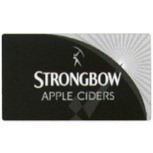 ”, no. 01741942 “
”, no. 01741942 “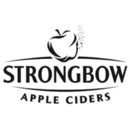 ” and no. 01933090 “
” and no. 01933090 “ ”, in which there “STRONG” were not required to be disclaimed.
”, in which there “STRONG” were not required to be disclaimed.
5. Together with the above arguments, we argued that this trademark should also have acquired distinctiveness through use. At the moment the marketing campaign for “STRONG ZERO” had already started in Taiwan, such as establishing the official website and Facebook fan page, releasing TV advertisements filmed with famous actors, holding promotional campaigns involving lucky draw, etc. There were also large amount of news articles and personal reviews on the internet regarding the product. But we would like to point out here that, in this case, the acquired distinctiveness is only the secondary argument in case the primary argument (inherent distinctiveness) would not be accepted, hence the priority and the proportion of the argument about the distinctiveness should be well arranged according to the importance.
From the above cases, we could learn that, except for the situation when trademarks include elements by definition need not to be disclaimed, to emphasize the basic rules that it should be determined by the “overall impression” of the trademark, is still the pivot rule to the trademark distinctiveness or possibility of confusion. Moreover, the key points for response are whether the referenced cases are enough and sufficient, the reasoning are well elaborated, and the context of the arguments are clear and complete. With proper response, there is still possibilities to persuade the examiner and acquire the protection of trademark rights.
We have been entrusted with an application, in which our client wished to file the Arabic numeral “1” or the word “ONE” as their trademark, and would designate it on rental services of sports equipment. In this case, would the proposed trademark meet the standards of distinctiveness in the examination practices?
According to the Examination Guidelines on Distinctiveness for Trademarks (“the Guidelines”) issued by Taiwan Intellectual Property Office (“TIPO”), although simple numbers are not directly excluded from trademark registration, based on the usual business practices, if the numbers might be deemed as dates, sizes, quantities, etc., the general consumers usually will not deem them as an indication of sources of goods or services, hence simple numbers are deemed not distinctive in principal. Hence, the Arabic numeral “1” obviously cannot pass the distinctiveness requirements. But if the number is written as a Chinese character, the guidelines stated that instead the examination rules for words shall apply.
However, if numbers are expressed in foreign languages, the Guidelines did not expressively indicate whether rules for words shall apply. If based on past examination practices, for example the registered trademarks containing “ZERO” which will be discussed in Section II below, we could tell that TIPO in general views them as words. Nevertheless, considering it is also possible that non-stylized word “ONE” will be deemed non-distinctive, we suggested our client to apply design elements to the word “ONE”, in order to enhance its distinctiveness, as below:
| Trademark Specimen | Designated Services |
 |
Class 41 “Rental of sports equipment, except vehicles; etc.” |
Furthermore, according to the publication “Examples of Words Need Not to Be Disclaimed” announced by TIPO, the word “GYM” usually is deemed as “a word representing the goods or service provider, a shop, or a name of place”, which is clearly non-distinctive and hence no need to be further disclaimed. Therefore, in the above indicated trademark, only the word “ONE” with design would be deemed the main distinctive portion. With the design, this trademark has a higher distinctiveness and generates stronger impression to consumers, as well as luckily there were no prior similar marks at the time of filing, hence it was allowed to be registered.
Besides, the same client has filed another trademark “gym4u” which also combines “gym” and numbers. This trademark was filed in non-stylized standard characters and on the same goods and services. This mark contains the service description “gym” combined with “4” and “u”, which stand for “for” and “you” by sound, thus the whole mark may be interpreted as “gym for you”.
If we just file a “gym for you” mark on the services “rental of sports equipment, except vehicles”, it is very likely that it will be deemed as a description of the use or characteristics of the designated services, which is not distinctive; but the actual mark “gym4u” is written in a combination of words and numbers, and the consumers will need to apply their imagination, thoughts, feeling or inference to understand the connection between the mark and the services, which is a “suggestive trademark” being distinctive, and it was allowed to be registered.
II. “STRONG ZERO” is not simply “STRONG” plus “ZERO”
If you are familiar with the canned cocktail market, you might have already heard of “STRONG ZERO” cocktails manufactured by the famous Japanese company SUNTORY. Their long-selling brand “STRONG ZERO” has just entered Taiwanese market in recent years, and SUNTORY filed the “STRONG ZERO” trademark (below referred to as “the target mark”) in May 2019, designated in Class 33 on goods including “distilled alcoholic beverages; alcoholic beverages, except beer”. On Nov. 20, 2019, TIPO issued an office action indicating that the target mark should not be registered, because it is not qualified for the distinctiveness requirement (Art. 29(III) of the Trademark Act) as well as may cause confusion to relevant consumers (Art. 30(I)(10)).
Regarding its distinctiveness, the examiner though the word “STRONG” in “STRONG ZERO” has the meaning of “strong, intense”, and if used on alcoholic drinks, the consumer will interpret it as “alcoholic drinks with strong taste” or “spirits”, which is a description of the characteristics of the goods and could give rise to doubts as to the scope of the trademark rights, hence the word “STRONG” is not distinctive.
Regarding the confusion issue, the examiner cited the following four trademarks “SUPER ZERO”, “ZERO BEER”, “ZERO” and “黑松沙士ZERO” registered in Class 32 on the goods including “beers”, and thought that the target mark and the cited marks all had “ZERO” in its main distinctive portion, and were designated on same or similar goods, hence there existed a likelihood of confusion on relevant consumers and the trademark should not be registered.
At first glance, it seems not easy to overcome the office action simply with argumentation; we understand that “strong” and “zero” separately are somehow commonly used in the beverage industry, so maybe the focus of response should be put on the gained distinctiveness and the reputation of the brand. However, if we still follow the examiner’s reasoning, which was to consider “STRONG” and “ZERO” separately, we think the chance to overcome the office action might not be high even with the supporting materials. Therefore, we decided to take a different approach which looked more difficult but could change the situation from the root. At the end, we successfully persuaded the examiner that the target mark had inherent distinctiveness as well as not similar to any of the cited marks, and it was allowed to be registered. Following are the main points of our arguments:
1. Firstly, we emphasized that when determining whether a trademark has distinctiveness, we should always take the whole trademark into consideration. If the combined word already generated a different meaning from the separated words, which would give the consumers a different impression, such trademark should have distinctiveness. We thought the trademark “STRONG ZERO” was a combination of the extremely contrast meaning of “strong, intense” and “reset to zero, void, non-existence”. Hence, when consumers saw the trademark “STRONG ZERO”, they would not recognize it as “STRONG” and “ZERO”, but would combine the words and interpret them as “intense zero”; since “intense zero” did not have any predetermined meaning in Chinese, the consumers definitely would not thought it is a description of the goods.
2. Secondly, we indicated that to determine whether two trademarks are similar, we should view the trademark as a whole; for marks consisting words of alphabetic languages, more attention should be paid to the beginning of the words. Although the target mark and the four cited marks all consisted “ZERO”, the consumers would not specifically divide the trademarks but would remember them as a whole. Within the cited marks, two of them began with “Z”, and one began with Chinese characters “黑松沙士”, and comparing with the target mark, their impression as a whole were not similar. As to “SUPER ZERO”, although it also began with “S”, but the impression of the trademarks a whole should not be similar and would not cause confusion.
| The target mark | Cited mark Reg. No. 01425274 |
Cited mark Reg. No. 01560949 |
Cited mark Reg. No. 01587065 |
Cited mark Reg. No. 01587094 |
 |
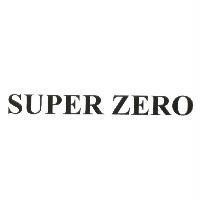 |
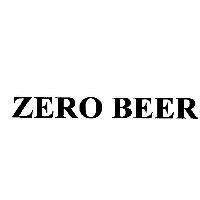 |
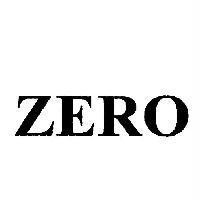 |
 |
3. Furthermore, we also indicated that there were several relevant registered trademarks co-existing which all contained “ZERO” and were designated on similar goods or services. For example, registration no. 01433273 “WINEZERO”, no. 00718981 “SUB ZERO” and no. 01455139 “OZERO” were designated respectively on Class 32 beers, Class 33 alcoholic beverages and Class 43 Bars and Brasserie. These three registered trademarks not only all contained “ZERO”, but also combined zero with more commonly used words “WINE” or “SUB”; no disclaimer were made to these trademarks; they were designated on similar goods or services to the target mark and were allowed to co-exist. Hence, they were the indication that the difference between them was enough for not causing confusion to the consumers, therefore the target mark should also be allowed for registration.
4. We also found there are several registered trademarks containing “STRONG” and designated on goods related to alcoholic beverages, which show that “STRONG” were not necessarily deemed not distinctive when used on alcoholic beverages. Some examples included registration no. 01780761 “STRONGBOW”, no. 01690797 “
 ”, no. 01741942 “
”, no. 01741942 “ ” and no. 01933090 “
” and no. 01933090 “ ”, in which there “STRONG” were not required to be disclaimed.
”, in which there “STRONG” were not required to be disclaimed.5. Together with the above arguments, we argued that this trademark should also have acquired distinctiveness through use. At the moment the marketing campaign for “STRONG ZERO” had already started in Taiwan, such as establishing the official website and Facebook fan page, releasing TV advertisements filmed with famous actors, holding promotional campaigns involving lucky draw, etc. There were also large amount of news articles and personal reviews on the internet regarding the product. But we would like to point out here that, in this case, the acquired distinctiveness is only the secondary argument in case the primary argument (inherent distinctiveness) would not be accepted, hence the priority and the proportion of the argument about the distinctiveness should be well arranged according to the importance.
From the above cases, we could learn that, except for the situation when trademarks include elements by definition need not to be disclaimed, to emphasize the basic rules that it should be determined by the “overall impression” of the trademark, is still the pivot rule to the trademark distinctiveness or possibility of confusion. Moreover, the key points for response are whether the referenced cases are enough and sufficient, the reasoning are well elaborated, and the context of the arguments are clear and complete. With proper response, there is still possibilities to persuade the examiner and acquire the protection of trademark rights.
消息來源:
